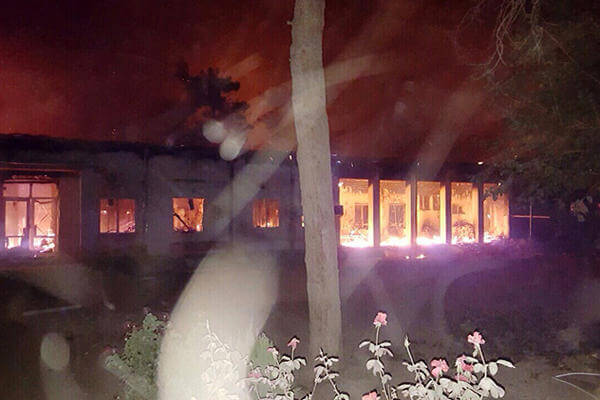A U.S. congressman said key parts of the Army's battlefield intelligence system failed during the Oct. 3 airstrike on a civilian hospital in Afghanistan.
Rep. Duncan Hunter, a Republican from California and a former Marine who served multiple tours of duty in Iraq, raised the criticism in a letter Tuesday to Defense Secretary Ashton Carton, according to a copy of the correspondence obtained by Military.com.
"My office has learned from multiple service members and officers that in the months leading up to, and during the tragic events of October 3, when a U.S. airstrike hit a Doctors Without Borders hospital in Kunduz, the primary components of the Pentagon's flagship Intelligence system, the Distributed Common Ground System (DCGS), were not operational in Afghanistan," the letter states.
"The non-operational components included the DCGS-Army (DCGS-A) Cloud, DCGS-A intelligence fusion servers, and the DCGS-SOF variant of the system," it adds.
Responding to a request for air support from Afghan forces on the ground, a U.S. Air Force AC-130 gunship attacked the Doctors Without Borders hospital in the city of Kunduz, killing at least 22 people and injuring more than 30, according to press reports.
President Barack Obama later apologized for the incident and Army Gen. John Campbell, the top commander in the country, called it "a mistake."
Troops have long complained about the reliability and effectiveness of the Army's battlefield intelligence system.
The 4th Infantry Division’s 4th Brigade Combat Team in 2013 submitted a report criticizing the system to the U.S. Army Intelligence Center of Excellence. "DCGS-A does not provide the functionality needed by deployed intelligence Soldiers," according to the document, a copy of which was obtained last year by Military.com.
Less than four months later, Lt. Gen. Mary Legere, the Army’s deputy chief of staff for intelligence, defended the intelligence system during a demonstration of the technology at Fort Belvoir, Virginia.
During the presentation, Army officials said the program draws on more than 600 sources of information, from Global Hawk drones and GPS satellites to ground sensors and biometric scanners. It uses a mix of military and commercial software applications, including Google Earth made by Google Inc. and i2 Analyst’s Notebook made by IBM Corp.
Across the military, the Distributed Common Ground System is estimated to cost at least $10.6 billion. More than half of that, or about $6 billion, has been spent, according to the Government Accountability Office, the investigative arm of Congress.
Yet glitches in the program have persisted, according to the Army units in Afghanistan. Perhaps most notably, troops couldn't pass information from servers on the battlefield to those on stateside bases -- a seemingly basic network functionality long standard on commercial websites, from Facebook to Google.
In the letter, the congressman, who got into a debate with former Army Chief of Staff Raymond Odierno over the issue, wrote, "Senior Army leaders have gone to extraordinary lengths in recent years to deny evidence of failures of the DCGS program, and I am asking for your help to prevent them from doing so following this tragic incident."
Hunter added, "The purpose of DCGS is to enable commanders and service members to 'see and know' the battlefield and prevent incidents like the airstrike on the hospital in Kunduz. As you know, DCGS has been in development for nearly two decades and has been plagued by failures in testing, training and combat. More than 28 Army Briagde Commanders have stated in writing that DCGS-A fails to provide the capabilities necessary to accomplish their mission in combat. over time, many of my colleagues have also expressed deep concerns about failures of the program."









